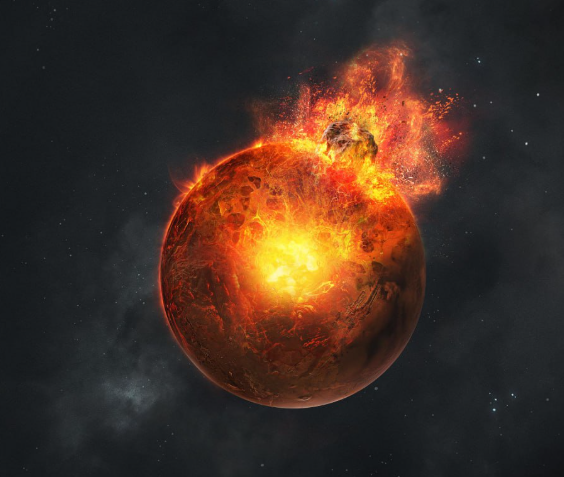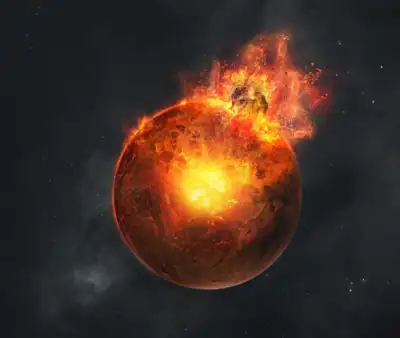Living time capsule: Mars’ mantle contains 4-billion-year-old evidence of violent planetary impacts

https://x.com/konstructivizm/status/1961900986068591017/photo/2Mars has always been an interesting arena of debate, discussion, and research, not just for its potential to host life, but for the secrets it holds about the early days of our solar system. Unlike Earth, where tectonic activity and erosion constantly reshape the surface, Mars provides a more preserved and older geological record. Its surface and interior remain relatively unchanged, making it a valuable “time capsule” from billions of years ago. Now, a major discovery by NASA scientists has opened a new window into the Red Planet’s violent past.Using data collected by NASA’s InSight mission, researchers have found crucial evidence that massive remnants from ancient planetary collisions still lie buried deep within Mars’ mantle.

Mars’s fiery past (Photo: Blackhole via X)
What have scientists discovered?
NASA scientists have uncovered deep evidence of Mars’ violent early history, massive buried fragments from ancient planetary collisions have been detected deep within the Red Planet’s mantle. These remnants were found using seismic data gathered by NASA’s InSight lander, which operated on Mars from 2018 to 2022.The research, recently published in the journal Science, is based on data from eight powerful marsquakes. These quakes allowed scientists to examine how seismic waves traveled through the Martian interior. The waves showed localized regions where they slowed down, which clearly points towards changes in density and material type, likely caused by rocky debris from ancient collisions. Some of these buried fragments are as large as 2.5 miles across.According to Constantinos Charalambous of Imperial College London, the study’s lead author, “We’ve never seen the inside of a planet in such fine detail and clarity before. What we’re seeing is a mantle studded with ancient fragments. Their survival to this day tells us Mars’ mantle has evolved sluggishly over billions of years. On Earth, features like these may well have been largely erased.”
Mars is a living time capsule!
This discovery is especially important because, unlike Earth, Mars does not have plate tectonics. Tectonic activity on Earth continuously recycles crust and mantle material, erasing most evidence of ancient impacts. Mars’ lack of such activity means its interior has remained relatively unchanged for over four billion years, preserving records of its violent past.InSight’s seismic readings helped scientists explore the Martian mantle, which stretches nearly 960 miles below the surface. The delayed seismic signals provided clues about the size and spread of the buried debris, revealing scars from a time when the solar system was still forming and chaotic collisions between young planets and space rocks were common.“We knew Mars was a time capsule bearing records of its early formation, but we didn’t anticipate just how clearly we’d be able to see with InSight,” said Tom Pike, a coauthor of the study, also from Imperial College London.This discovery not only enriches our understanding of Mars but also gives scientists an important perspective on the early history of Earth and other rocky planets. It shows how ancient impacts can shape planetary interiors, and how Mars, in particular, has preserved these features thanks to its geological stillness.







